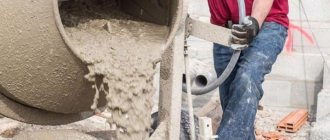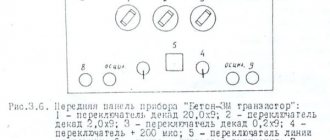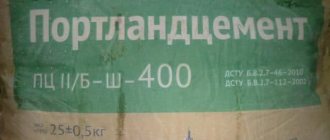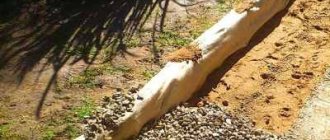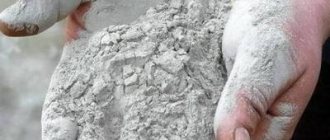Activity and grades of Portland cement: what are there and how to determine them?
Cements come in different brands, are made from different raw materials, and have different properties and qualities.
Based on the raw materials, cements made on the basis of:
- Portland cement clinker;
- aluminous (high-alumina) clinker;
- sulfoaluminate (-ferritic) clinker.
According to their intended purpose (area of use), cements can be general construction and special.
Cements are also divided according to the speed of hardening (normal-hardening and fast-hardening) and setting time (slow-setting - the beginning of setting is more than 2 hours, normal-setting - from 45 minutes to 2 hours, fast-setting - less than 45 minutes).
In general, cements must be manufactured in accordance with the requirements of GOST 30515-97.
The most important characteristic of any cement is an indicator such as activity, which characterizes the strength qualities of the material.
Determination of the cement grade is carried out at the cement plant in special laboratories using various methods. To do this, several rectangular samples are made from a mixture of cement, sand and water in the required proportions. After setting, hardening and drying, they are subjected to bending and compression tests.
Marking - M actually characterizes the compressive strength of the sample, and when we see the inscription “Cement M500” on a bag of cement, it must withstand a load of 500 kg per cm3, respectively, cement M400- must withstand 400 kg/cm3. Retail chains mainly sell cement of the following brands: cement m500, m400, m300. But special cements come in grades M600, M700.
To give cement various additional properties, various additives are introduced into their composition and are marked as follows - d0, d20, d80 and shows the percentage of additives to pure clinker in a batch of cement. Further in the labeling there is information about the additives themselves:
- PC – ordinary Portland cement;
- ShPC – Portland slag cement containing additives of more than 20% compared to the clinker component;
- BC – white cement used for finishing work;
- WRC is a waterproof expanding cement. Used for sealing seams in hydraulic structures. Characterized by fast setting time (from 4 to 10 minutes);
- N – standardized cement (made using clinker of a strictly standardized composition;
- PL – plasticized cement (has increased frost resistance);
- GF – hydrophobic cement. This type of cement, due to the fact that it does not absorb water within 5 minutes, can be transported over considerable distances; it is not as susceptible to dampness as ordinary Portland cement. In addition, hydrophobic cement has high plasticity and frost resistance;
- B – quick-hardening cement (used for urgent repair work).
And in conclusion, I would like to add that depending on the conditions and periods of storage, the activity of cement changes for the worse.
Cement activity
Cement activity is one of the main characteristics of cement, its actual compressive strength of samples made from standard cement mortar, manufactured and tested under standard conditions.
The grade of cement is determined based on its size. For example, if after 28 calendar days the activity of cement is set at 43 MPa, then such cement is classified as grade M400. The activity of cement is determined both during normal hardening and after heat and moisture treatment.
Thus, the activity of cement is an important factor on which not only the strength of cement depends, but also the building structure where this building material is used.
Activities that increase the activity of cement are called cement activation . Due to the fact that the activity of cement depends on grinding, composition and chemical additives, with the help of these components it is possible to regulate the activity of the building mixture. For example, a decrease in activity can be achieved by adding a chemical additive such as quartz to the mixture, and an increase in activity by adding aluminates. By adding gypsum to the cement mixture, you can regulate the period and setting time and influence the acceleration of hardening. In addition, gypsum can be added to both powder and ready-made cement mortar.
Essentially, cements are powders. The fineness of grinding of a building material is determined by the residue after passing the building material through a mesh (sieve) of 80 microns. The higher the grinding fineness, the higher the strength of the cement. The activity of the building material is higher with the smallest grinding. This is due to the fact that the finer the grind, the faster the cement substances react, and the total surface of all particles that react increases.
The higher the grade of cement, the higher its price. And the higher its hydration (hardening after interaction with water). For example, cement, in which alite predominates, is characterized by such properties as super strength and extremely rapid hardening.
The activity of cement is also affected by the conditions and duration of storage of the building material in the warehouse. When exposed to water and carbon dioxide, particles of a new substance can form on the surface of cement, which subsequently reduce the activity of cement during its use. Thus, finely ground cement, if stored improperly for a month, can lead it to the category of ordinary cement. High humidity in the warehouse is also not allowed. The relative humidity in the building materials storage room should not exceed 40%. If the humidity exceeds the specified value, then rapid hardening of the cement occurs. In such cases, it is necessary to add hydrophobic additives (asidol-mylonaftha, mylonaftha, amino acid and others) in amounts up to 0.25%.
Grade and activity of cement
The concept of cement grade is associated with determining the strength of samples prepared using a standard method from a mixture of cement, sand of standard quality and water.
The division of cement into grades was introduced in the USSR in 1930. Over the past period, test methods for determining the strength of cement and the classification of grades have been changed several times, which is due to a number of reasons. The most significant reason should be considered the systematic improvement of cement production technology, which sharply increased the properties of Portland cement, in particular its strength. In addition to the above reason, the experience of using cement in construction production was of significant importance in changing the testing methods and classification of cement. When developing methods for testing cement, the following must be ensured: determination of strength without testing cement in concrete using transition coefficients and the amount of cement (consumption) when selecting the composition of concrete; identifying the degree of homogeneity of cement batches; prompt implementation of mass regular tests at the cement plant and control tests at the construction site.
Experience has shown that the listed conditions, due to their complexity, have only been partially resolved. As noted above, cement is a polymineral and polydisperse powder into which gypsum is added when grinding clinker to ensure a process with optimal results for setting and strengthening the cement paste. These features of cement have different effects on strengthening and ultimately the acquisition of the strength that is included in the cement passport. Any, even the most insignificant changes in the chemical and mineralogical composition of cement, its granulometry, the quality of mixing water, the conditions for preparing the mortar mixture and samples from it, and the duration of hardening change the strength of cement.
Without accurate information, in this case about the strength of cement, it is impossible to decide on its suitability for mortar, concrete (reinforced concrete) of a given strength. We must always remember that choosing cement based solely on strength is practically unacceptable. The purpose of cement for strength is preceded by an analysis of the operating conditions of the structure (structure). In passing, we note that the correct purpose of cement makes it possible to create concrete (reinforced concrete) structures, structures and parts of exceptionally high durability. The fragility of some structures is associated, in particular, with the use of cements that should not be used in these specific conditions.
In different countries there are various methods for determining the strength and classifying cements by strength. The question may arise about the advisability of testing cement to determine its strength directly in concrete, excluding testing of standard samples. However, such a solution is impossible due to the exceptional diversity of construction sands, gravel and crushed stone and the same diversity of concrete compositions. Cement in standard mortars and in concrete on different materials will show different strengths.
With this method of testing cement, cement factories are deprived of the opportunity to evaluate their products and monitor their quality during the technological process. The above explains the reason for the emergence and application of conditional test methods. Due to the fact that sand affects the strength of cement, in the USSR quartz sand near the city of Volsk on the river is taken as the standard. Volga. This sand is sieved at a special plant, after which it enters the laboratories of cement factories and enterprises where cement is tested.
The strength of standard mortar samples after 28 days of hardening is called cement activity. In the USSR, to classify cement by strength, it is customary to round the obtained average strength of samples to the nearest hundred kilograms. It is allowed to round up only if the activity of the cement after rounding differs by no more than 5%. This figure for the strength of cement is called its grade. In the USSR, Portland cement M 300, 400, 500 and 600 is produced.
The classification of cement into grades with an interval of 100 kg (10-1 N) of strength is also arbitrary and raises objections among a number of specialists.
The classification of cement cannot be considered separately from the technology of its production and consumption. Improving production helps to increase the production of high-grade cement, which first of all makes it possible to increase the production and quality of concrete.
Progress in the field of manufacturing cementitious materials entails improvements in the field of design, calculation and design of reinforced concrete structures and their manufacturing technology. The development of the production of high-grade cements, homogeneous in their properties, makes it possible to move to the widespread use of concrete on light stone materials and structures of smaller sections, which will sharply reduce the dead weight of the structure. The use of high-grade cements with accelerated hardening times in most cases will simplify the manufacture of structures and eliminate additional technological processing - heat and humidity treatment.
For the most complete use of strength, the best option is to classify cement by activity. The breakdown of cement by grade with an interval of 100 kg/cm2 (10-1 MPa) is closest to the optimal option. The division of cement by strength through 50 kg/cm2 (10-1 MPa), which approaches the division by activity, is currently difficult to implement, since when cement of different activity is received, due to the limited storage space at construction sites, it is not possible to store it separately. A reduction in the number of grades is possible due to the production of mainly the highest grades of cement (mainly 500 and 600, and over time 700 and 800) with a limited production quantity of M 400 cement and in the case of attaching all construction projects to certain cement plants.
At this time, such an attachment of plants can be realized, which is facilitated by the improvement in the geography of the location of cement plants, which has ensured a significant reduction in cement transportation. For example, if in 1950 the average distance for transporting cement was 680 km, then in 1966 it decreased to 494 km. In addition to increasing the quality of cement, improving its other properties is also of particular importance.
It should be noted that for the first time in the USSR in hydraulic engineering construction, starting in 1935, attention was drawn to the need to standardize, in addition to strength, other properties of cements, making it possible to obtain concrete for critical engineering structures with the design waterproofness, frost resistance, exothermicity and chemical resistance in different cases aggression In particular, already in 1934 during the construction of the canal. In Moscow, concrete was designed for different curing periods - shorter than 28 days. and longer (up to one year or more). Over the course of a number of years, local technical requirements for cement have been created and improved for numerous hydraulic structures (hydroelectric power station on the Volga River, Volga-Don Canal named after V.I. Lenin, Saratov Hydroelectric Power Station, Bratsk Hydroelectric Power Station, Krasnoyarsk Hydroelectric Power Station and many other hydraulic structures).
It should be taken into account that in hydraulic engineering construction several types of cement are used, differing in properties, which is associated with the operating conditions of the concrete structures. For this reason, cement used in hydraulic engineering should not be called hydraulic, since similar operating conditions for concrete arise in other structures (industrial, bridges, roads, etc.). All cements produced by industry must be catalogued; which will allow us to move from theoretical principles to the use of cements with properties that meet operating conditions. Such a radical change in information about the properties of cement will undoubtedly ensure minimal consumption and high durability of structures, structures and parts.
Pages:
- |
- |
- |
- |
- |
- |
- |
- |
- |
- |
- |
- |
- |
- |
- |
- |
- |
- |
- |
- |
- |
- |
- |
- |
- |
- |
- |
- |
- |
- |
- |
- |
- |
- |
- |
- |
- |
- |
- |
- |
- |
- |
- |
- |
- |
- |
- |
- |
- |
- |
- |
- |
- |
- |
- |
- |
- |
- |
- |
- |
- |
- |
- |
- |
- |
- |
- |
- |
- |
- |
- |
The device for determining the activity of cement CEMENT-PROGNOZ has the following advantages:
- The only automatic contractionometer of an original design, including: – an all-milled, compact measuring chamber made of polyamide – a contraction sensor (volume change) with a precision measuring system – a detachable glass made of polyamide, which allows you to quickly and without damage remove the cement sample after testing – an additional measuring container for studying processes structure formation of cement paste by changing its electrical resistivity and temperature (optional)
- Display of process dynamics on a backlit graphic display
- Possibility of simultaneous connection of up to 3 measuring cameras (optional)
- The geometry of the samples obtained after testing allows them to be tested in compression to correct the results obtained
- Determination of the setting time of mortar and concrete samples (function of the automatic Vicat device)
- The device is available in two versions
- LEMO connectors
Service computer program:
- Transferring measurement results to PC
- Archiving, documentation and processing of results
- Export to Excel, save to text format for other programs
Technical characteristics of CEMENT-PROGNOZ:
| Version 1 | Version 2 | |
| Measuring range of contraction (volumetric deformations), ml | 0…5 | 0…20 |
| Limits of absolute error in measuring contraction (volumetric deformations), ml | ±0,1 | ±0,2 |
| Discreteness of contraction readings (volumetric deformations), ml | 0,001 | 0,001 |
| Activity measurement range, MPa | 10…100 | 10…100 |
| Discreteness of activity readings, MPa | 0,1 | 0,1 |
| Water temperature measurement range, °C | 0…50 | 0…50 |
| Number of measuring chambers | 1…3 | 1…3 |
| Number of containers for measuring temperature and sample resistance | 1* | 1* |
| Sample temperature measurement range, °C | 0…60* | 0…60* |
| Sample resistance measurement range, kOhm | 0,1…10* | 0,1…10* |
| Overall dimensions, mm: | ||
| — electronic unit | 150x68x23 | 150x68x23 |
| - measuring chamber | 220x300x140 | 220x300x140 |
| - measuring container | ø80×130* | ø80×130* |
| - sample glasses | ø84×95 | ø84×95 |
| Test press weight, kg | ||
| — electronic unit | 0,19 | 0,19 |
| - measuring chamber | 2,6 | 2,6 |
| - measuring container | 0,5* | 0,5* |
* — a set for measuring temperature and electrical resistivity of the sample is available on special order
Main functions of the CEMENT-PROGNOZ device:
- Automatic determination of cement contraction within 3 hours and prediction of cement activity by a given date
- Obtaining basic cement indicators for 1,3 and 7-day contraction (optional)
- Determination of setting times using cement, mortar, and concrete samples
- Recording processes of changes in volume (contraction), temperature and electrical resistance of the material due to hydration and exothermic reactions of cement
- Displaying process dynamics on the display with automatic scaling of the time and contraction axes (optional temperature and sample resistance)
- Complete archiving of processes and measurement results
- Russian and English language for menus and text messages
- USB connector for working with a computer and charging batteries
- Service computer program: reading measurement results from the device memory; analysis and processing of measurement results; data archiving and report generation; export to Excel, text format and other applications
Basic properties of Portland cement. Price
Among other important characteristics endowed with Portland cement, the price of which per bag varies between 210-250 rubles depending on the composition and brand, we can highlight:
- the period during which the raw materials are set;
- density;
- heat removal;
- grinding fineness;
- water separation and water demand;
- frost resistance;
- degree of adhesion to reinforcement.
Table 2 GOST 10178-85 Portland cement and Portland slag cement
Table 3 GOST 10178-85 Portland cement and Portland slag cement
The setting period is fixed through testing and tests. According to the provisions of GOST 10178, Portland cement, produced from high-quality ingredients in the required proportions, sets in just 40 minutes after mixing with water. A process that is too fast can lead to the fact that you simply do not have time to use the raw material before it hardens. At the same time, excessively slow setting is also unfavorable, because it can increase the period of construction of the object.
The level of uniformity of change in the volume of Portland cement is also checked by testing samples when they interact with boiling liquid.
The setting speed of Portland cement, which is affordable for any builder, is affected by the fineness of its grinding. Thus, carefully ground mass has high strength. Traditional Portland cement, produced in compliance with all GOST standards, has a specific surface area of 250-300 mg/kg.
Water demand. The liquid acts as the most important catalyst for the entire set of chemical processes during the hardening of the material, giving it mobility and plasticity. To make cement of excellent quality and normal thickness you will need approximately 25% liquid. To reduce water demand, it is enough to use sulfite-yeast mash and some plasticizers, which can slightly increase the price of Portland cement.
The degree of water separation is established at the moment of squeezing water out of the finished solution under the influence of gravity of its particles. To reduce this indicator you need to use active mineral supplements.
Frost resistance is characterized by the ability to resist alternate freezing and then thawing in an aquatic environment. Based on the laws of physics, frozen water exceeds its normal volume by 10%, which creates additional pressure and mercilessly destroys the structure of concrete. To increase frost resistance, air-entraining substances are traditionally used, including sodium abietate, washed wood pitch and others.
Heat dissipation. Portland cement, manufactured in accordance with all GOST requirements, generates heat during the hardening period. If the heat generation occurs too quickly, then such wall material should not be used. To optimize the degree of heat release, you need to pay special attention to the mineralogical composition, use additional active mineral ingredients and additives, the volume of which affects not only the quality indicators of the finished Portland cement, but also its price.
Corrosion resistance is determined by the density of the raw material and its mineralogical composition. To increase this indicator, the porosity of concrete and the fineness of grinding should be increased.

